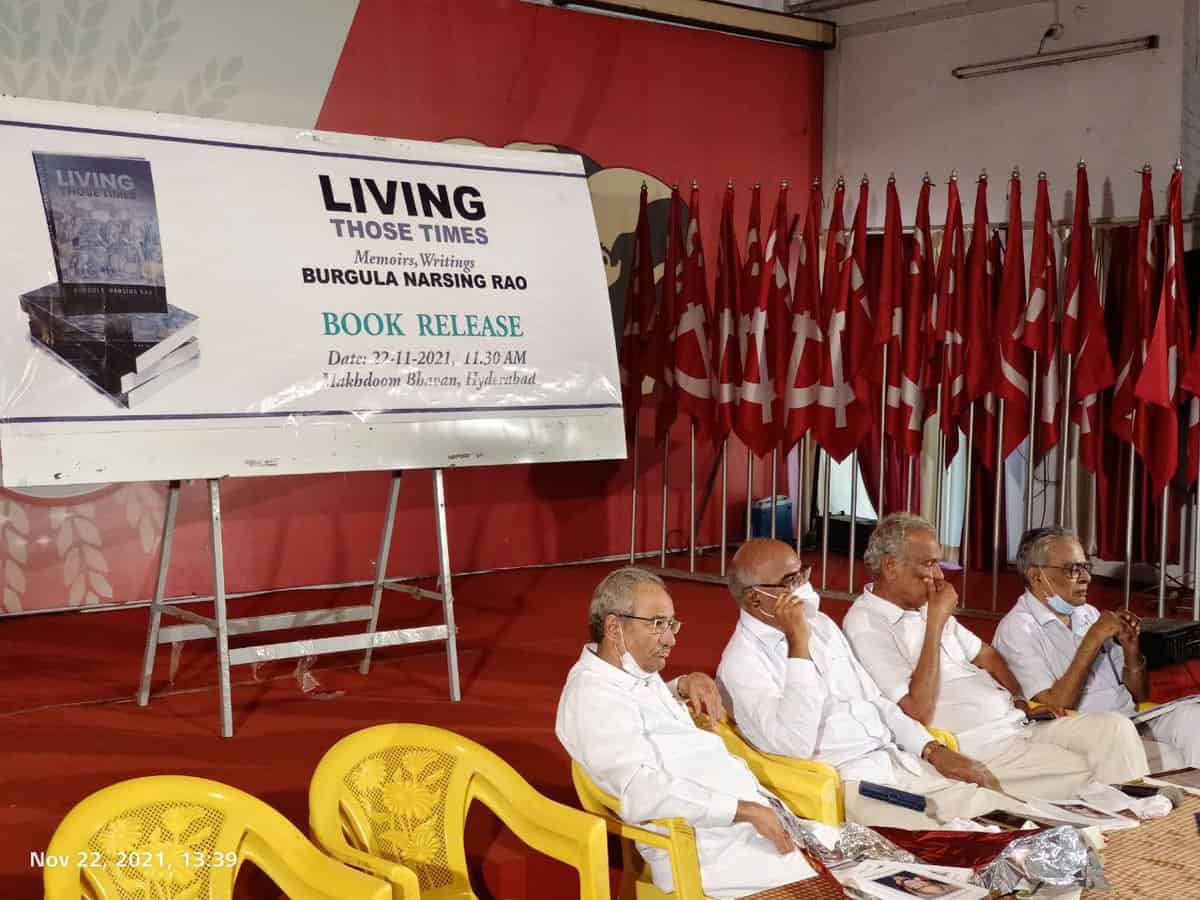Hyderabad: ‘Living Those Times’, memoirs and writings of the late Communist Party of India (CPI) leader Burgula Narsing Rao was released in the city on Monday. Rao, who was a left student leader in the Nizam College in 1948, had passed away this year in January.
Burgula Narsing Rao’s writings and memoirs gloss over his time in the All Hyderabad Students Union (then the student organisation of the CPI), and later into his political life and philosophy. His uncle, Burgula Ramakrishna Rao, was a Congress leader and the first chief minister of the erstwhile Hyderabad state (until it was disbanded and divided on linguistic lines in 1956).
In fact, ‘Living Those TImes’ even contains some intelligence reports on the All Hyderabad Students Union from between 1939-45. Burgula Narsing Rao, a true blue Hyderabadi, in fact was the first president of the All Hyderabad Students Union, at a time when the CPI was a force to reckon with in the Hyderabad State.
The book release function was attended by senior CPI leaders like P. Narayana, ex-MP Aziz Pasha, Kandimalla Prathap Reddy, and others.
Narsing Rao had worked along with CPI legends like Mahkdoom Mohiuddin, Raavi Narayan Reddy, Jawad Rizvi, Baddam Yella Reddy and others. In fact, in his book, there are chapters dedicated to all of them, and also one on Sarojini Naidu. The late CPI veteran also goes over his childhood, and how he came to join the left movement.
However, more than anything else, Narsing Rao always vividly recalled an incident that became symbolic of the violence that took place in the days leading up to Operation Polo or Police Action (which was set forth after negotiations between the Indian government and the last Nizam of Hyderabad failed post 1947 over Hyderabad’s future).
He was the witness to the murder of Shoaibullah Khan, a city-based journalist who ran the newspaper Imroze. Khan was shot dead by the Razakars, a militia run by Kasim Razvi, who was head of the Majilis-e-Ittehadul Muslimeen on the intervening night of 22-23 August. Imroze (which was pro Congress then) was run from Rao’s home at Kachiguda.
Many say that Narsing Rao could have made a career in politics had he joined the Congress (which his uncle headed in the Hyderabad state), but the man never let go of his ideals. Post Hyderabad’s annexation to India in 1948, Narsing Rao also led the Mulki (for local jobs and representation in governance) movement protests in 1952 in Hyderabad.
Towards independence, the erstwhile princely state of Hyderabad was run by Osman Ali Khan, the last and seventh Nizam. He refused to join India or Pakistan in 1947, and chose to stay independent. The last Nizam had tried to his best to negotiate with the Indian government and stay independent. The Hyderabad and Indian governments even signed a ‘Standstill Agreement’ in November of 1947 to negotiate on the issue.
However, things fell through, and the Indian government sent its army which finally led to Operation Polo or Police Action as it is known, on September 13 in 1948 and the state was annexed or merged with India on September 17 the same year.
While the Rashtriya Swayamsevak Sangh (RSS) and Hindu mahasabha had been active then too, its role was very limited given the fact that in Telangana it was the Communist Party of India (CPI) which had taken over most of the rural areas. The CPI in fact organised the ‘Telangana Armed Rebellion’ against state-appointed Jagirdars, the landholding class that comprised both Hindus and Muslims from 1946-51.
It was essentially an uprising against feudal landlords by peasants in the state. The Telangana rebellion continued even after Operation Polo, which resulted in the army going after the communists. CPI leaders often state that many of its cadres were sent to jail until 1951. However, the matter was resolved after the CPI decided to call-off the struggle on October 21, 1951.
The last Nizam was made Rajpramukh after Police Action. There was a military government for about 18 months, after which the Hyderabad state got its first elected government in the 1951-52 general elections with Congress leader Burgula Ramakrishna Rao being its first chief minister.
The state existed until 1956, till it was divided on a linguistic basis, and the Telangana region was merged with the Andhra and Rayalaseema regions to create the joint Andhra Pradesh state (1956-2014).







